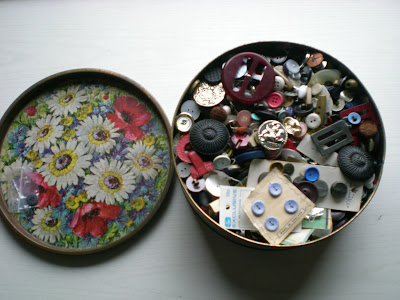If you haven’t yet read it, then read on and find out how you could have a celebration SIGNED print copy, or one of two ecopies of The Beltane Choice!
I blogged about the story behind the writing of the book last year, but if you missed those posts this is a recap.
The Agricolan or Severan era? England or Scotland as the location? Those were decisions I had to make when writing The Beltane Choice.
What was so appealing about the subject?
I really love reading and learning about Celtic Britain, especially at the time of Roman Invasion of the island. As a Scot, I'm naturally more inclined to want to write about what the Roman Army did in my neck of the woods- though I do also love to read about all archaeological developments.
What in particular sparked the idea of me writing The Beltane Choice, my first historical novel for a more mature audience?
It’s a convoluted story, but it was the notion that some 10,000 Roman soldiers were encamped a few hundred yards away from my house and garden in Kintore, Aberdeenshire. Since I live so close to where those earthen boundaries were, I imagined that some of those soldiers must have tramped over my own garden to reach the fresh water of the River Don, my soil lying in between the temporary camp site and the water supply.
 |
| my photo of around 2002 |
The archaeological digs of 2002-2004 at Deer's Den, Kintore, uncovered evidence of some 250 bread ovens/ fire pits which were used by Roman soldiers to prepare their unleavened bread and ubiquitous porridge which were staple fare for the ordinary soldier on campaign.
When I first looked at the preliminary digging as in the photo above I found it hard to see how the archaeologists could tell anything at all, but over the duration of the dig I was allowed to visit the site with my primary school class. The Roman Marching Camp site at Kintore was on what had been our former village primary school grounds. It was being investigated since the school was being relocated to that very site. During those structured 'walk abouts' with the archaeologist, the processes were explained and up to date information given to us. The thinking at that time was that the number of soldiers occupying the site had to be more like 10, 000 rather than the much earlier figure of 4,000 men, and that the evidence leaned more to the Agricolan times. Deer’s Den was good site for a temporary camp and it was definitely used by the Roman Army more than once.
(Some inforamtion on the 2002 - 2004 dig is here: http://www.kintore.org.uk/history/history.html#.UiHHaT-2EpI)
It was an exciting time at school, some of our studies based on the Roman cccupation of Kintore. My class of 11-12 year olds wrote fabulous work so I had to write about it, too! The question was which era should I write about.
 |
| Agricola - wikimedia |
The distinctive hill top of 'Mither Tap', on the Bennachie range of hills in Aberdeenshire, is one of the possibilities for that battle, later named Mons Graupius - though no actual evidence has been found around Bennachie, or any other contender site, for such a battle.
Mither Tap is only about nine miles from my house at Kintore. Compelling evidence, in my opinion, to back up the idea that the battle of Mons Graupius took place on the foothills of Bennachie is that there is an even more extensive marching camp at a site called Durno which directly faces Mither Tap.
 |
| Taken from the Durno site |
Tacitus cites a number at the battle of 'Mons Graupius' much more in keeping with that number which was encamped at Kintore. Moving the Roman army the nine miles from Deer's Den, Kintore, to Durno, would have been an easy day's march for them. Why they only moved nine miles, in late summer or early autumn, according to Tacitus, has to be significant, otherwise I feel they would have moved on further north. The Roman Army certainly did have marching camps further north, but I'm of the opinion that the Agricolan ones might have been after the followers of Calgacus fled from the battle fields having been routed by the Roman Batavian and Tungrian contingents. Establishing marching camps further north after a large battle, ensuring the locals around were subdued, seems a realistic tactic that Agricola would have used.
I loved the idea of both sites, Kintore and Durno, having had Roman occupation and wanted to write my own fictional version of what happened. My first novel - Dabbling With Time - was not intended for adults, but was for the best readers of my current Primary Seven Class at Kintore School. That time-travel novel is set in Severan times, in AD 210, in Kintore and its surroundings in Aberdeenshire. In Dabbling With time the site at Durno, opposite Mither Tap of Bennachie, is a place of confrontation in the novel between the Roman Empire and the Maetae confederation of northern Celtic tribes. Fiction, definitely, but my idea of why Lucius Septimius Severus had so many soldiers encamped there around AD 210, during what was to prove the very last invasion of the Roman Empire in north-east Scotland.
Since I wanted no confusion about my romantic adventure for a more mature audience, I set The Beltane Choice in a different location and different era. AD 71 was decided on, since it was a period of systematic subjugation of the Celtic tribes of Northern Britain - the location being the north of what is now England rather than northern Scotland. To introduce a ‘Scottish’ element to The Beltane Choice I chose my main characters as coming from warring Celtic clans which straddled the area now termed the borders between Scotland and England. (roughly that at the bottom third of the image below)
 |
| wikimedia |
The timing of The Beltane Choice adventure in AD 71 was prior to the battle of Mons Graupius AD 84, as written by Tacitus, but it has been perfect for leading into the follow on novels recently completed and which are now submitted to my publisher, Crooked Cat Books, for consideration.
During the period AD71 to AD 84 the Roman Army made advances north of the border hills mentioned in The Beltane Choice, Agricola marching his troops all the way up to Kintore. (Deer's Den would be the number 9 white square if counted from the top left)
My follow-on novels to The Beltane Choice begin in AD 71 in northern ‘England’ and culminate in AD 84 at my Battle of Mons Graupius, my battle site on the foothills of Mither Tap of the Bennachie range. In the first follow-on novel much of the action happens in Brigantian lands. The second novel includes many of those 'white' forts you see in the image of the Agricolan Campaign in North Britain.
****Celebration time****
If you would like a signed print copy of THE BELTANE CHOICE , or an ecopy of The Beltane Choice, leave me a comment about this post in the box below to enter the draw. The first name drawn on Monday 1st September 2013 at noon (UK time) will receive the print copy, the second and third names the e-copies.
(unless the preference is for an e-copy)
Please add a contact FB or email address in case you are my winners!
Good luck and have a happy weekend.
Slainthe!























